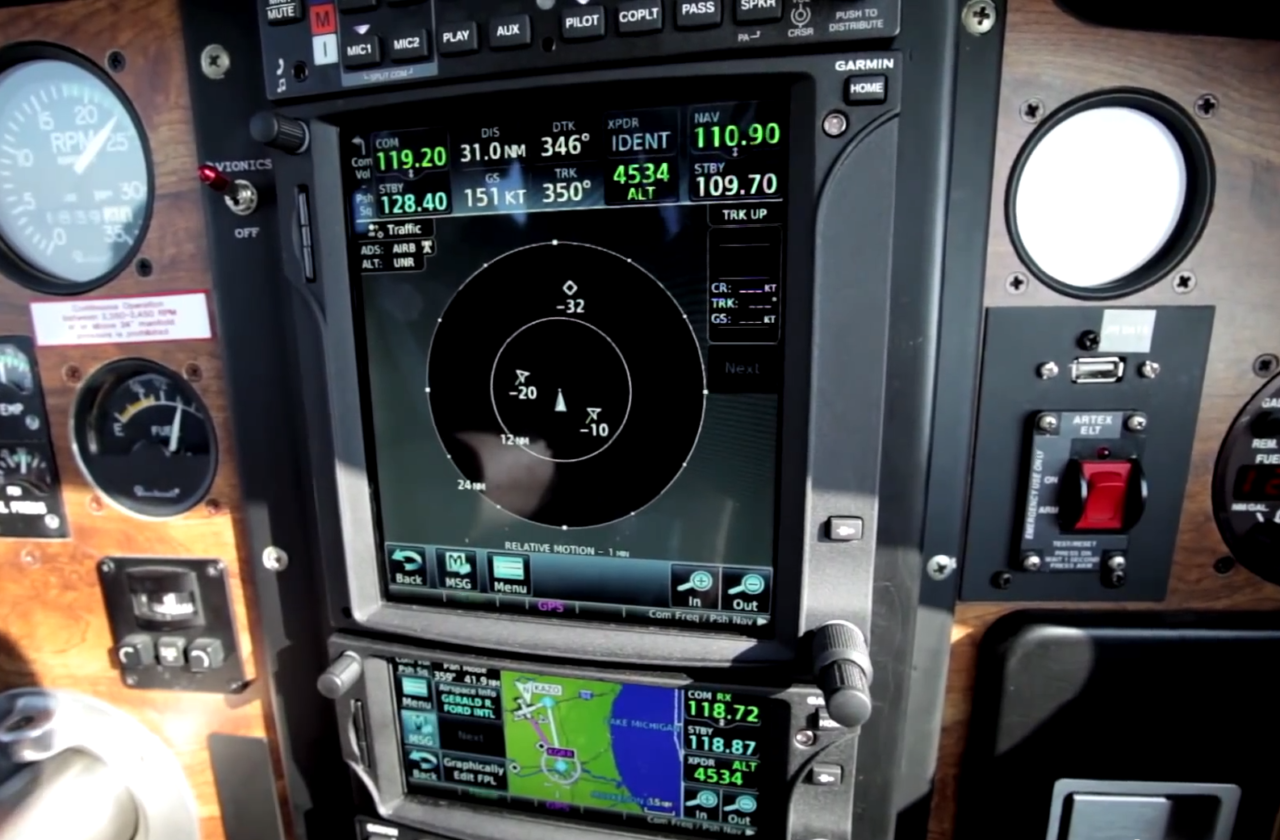[Avionics Today 10-31-2014] With the FAA’s Call to Action day just behind us and the administration making it clear that they won’t budge on the 2020 ADS-B Out mandate, General Aviation (GA) operators are on the lookout for easy, affordable equipage options. While many operators argue the technology is still too costly, industry alternatives are coming onto the market promising cheap, simple options.
 |
| Garmin’s GDL 84 ADS-B solution in use on a GA aircraft. Photo: Garmin |
“We are today seeing prices having dropped to $3,000 to $4,000 for equipment that provides compliance with the FAA mandate for small aircraft and also provides the ADS-B In benefits of seeing other aircraft and the data linked information obtained through [Flight Information System – Broadcast] FIS-B,” said Jens Hennig, the vice president of operations at the General Aviation Manufacturers Association (GAMA), in an interview with Avionics Magazine.
While $3,000 can seem a small price compared to the costs for equipage on commercial or business aircraft, GA operators are concerned that ADS-B may come to cost nearly as much as the aircraft itself. Manufacturers such as Aspen, Avidyne, BendixKing, Free Flight, Garmin, and Trig Avionics are looking to deliver cheaper, more enticing product offerings for GA operators.
“The GA operators, especially on the low end, the aircraft don’t have that high a value so they need to be very prudent on the investment that they spend on their aircraft,” said Bill Stone, senior business development manager at Garmin in an interview with Avionics Magazine. Garmin has recently come out with its GDL 84, a low-cost, standalone solution designed for GA aircraft, but Stone insists cost isn’t the only factor.
“It’s not just cost, it’s cost-benefit. What do they get for that money? They get compliance but that doesn’t really give any benefit to the operator other than that he can continue doing what he’s doing today. By getting access to weather and traffic data, they can actually derive benefit from their investment in the aircraft,” he said.
Added benefits, such as the subscription-free access to weather and traffic data that Garmin offers with its new system, are what companies are looking to bring to the table for GA operators if they wish to remain competitive and encourage reluctant pilots to equip. The FIS-B link, provided through GAMA free of charge for compliant operators as of March of this year offers a similar pull to operators, with faster weather updates in the cockpit through the UAT-datalink.
Hennig notes that pilots who have already equipped embrace the technology, and some are even asking to push it further and expand the mandate to further enhance safety. But as of now, this number of already compliant pilots is still very small. Even as we’re hitting the halfway point with the mandate, as of last month there are only 6,200 aircraft out of a GA fleet of roughly 230,000 that are equipped to comply with the mandate, according to Stone.
“The pilots who are starting to think about the mandate are really asking questions about the impact on them and their specific aircraft. What we need to do as an industry is provide the community a better understanding of the impact on each individual pilot,” said Hennig. “The equipment is available from GAMA members at very competitive price, but the decision about how to equip is going to vary greatly. Can you upgrade your transponder and be compliant? Do you want access to the uplinked data on your tablet? Do you want to display the data on an MFD? These types of questions are going to inform what equipment and price point makes the most sense for your aircraft.”
The FAA and GAMA alike are pushing for education on the mandate and its benefits. Hennig also insists that pilots already in compliance are seeing benefits every day from the technology.
“The testimonials that we hear is that equipped aircraft are picked up by controllers at much lower altitudes compared to radar only which lets them proceed on course earlier and save both time and gas. Pilots flying in congested airspace like Florida are talking about how they appreciate having the traffic picture when flying in airspace around the large flight schools,” he says. But according to Hennig, weather, airport status and airspace updates are the real game changers.
Solutions are out there, and the options are growing, but operators are still dragging their feet waiting for better benefits and cheaper solutions.
“We have a lot of work ahead of us to get the GA fleet equipped, but the general consensus at yesterday’s call to action meeting was that we can get there by 2020,” Hennig said.